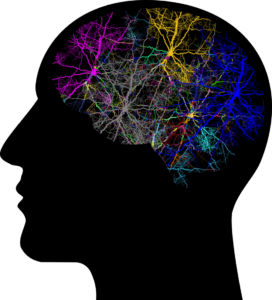Sometimes a couple can look like they have it all together on the outside, but really be struggling on the inside. This was true of Sarah and Zach. They were engaged and in the process of planning their wedding. They picked a date and a venue and had even announced the news to families and friends. All seemed to be going perfectly, but in private, they were struggling and second guessing their decision.
 Their arguments weren’t healthy. They would begin small and escalate to nasty fights filled with loud outbursts. It usually ended with Sarah shouting, while Zach left. Sarah felt dismissed and ignored by Zach, which irritated her, while Zach felt disrespected and was upset because Sarah would stew on things and then explode.
Their arguments weren’t healthy. They would begin small and escalate to nasty fights filled with loud outbursts. It usually ended with Sarah shouting, while Zach left. Sarah felt dismissed and ignored by Zach, which irritated her, while Zach felt disrespected and was upset because Sarah would stew on things and then explode.
They were caught in a vicious cycle. The more Zach dismissed Sarah’s emotions and thoughts, the more angry and aggressive Sarah became and things continued to spiral downward.
Finally, they decided to see a counselor named Megan. They hoped that a therapist would help them deal with the conflict in their relationship. When Megan heard their story, she recommended that Zach and Sarah begin seeing her on an individual basis.
In the first few sessions, Sarah’s anger issues surfaced and Megan shocked Sarah by suggesting that she should explore how to express her anger. Sarah laughed at her, outright, saying “I don’t have any issues expressing anger! I’m usually a hothead.”
Patiently, Megan explained that these expressions of anger were not the core of her anger, but only symptoms of it. The deeper issue was manifesting as rage, but the real issues weren’t being dealt with in a way that could be considered healthy.
Megan also explained that her angry outbursts were hiding the true feelings she was having, keeping her from understanding what was really going on in her heart. When Megan asked her to try to explain and describe the underlying feelings associated with her anger, Sarah didn’t know what to say.
The most Sarah could do was share that she had been raised by a father who punished her for any expression of anger because it was “disrespectful.” At the same time, her father would hypocritically excuse his own angry and abusive outbursts, placing the blame on Sarah or on her mother.
To make things worse, Sarah’s mother passive-aggressively took out her anger on Sarah and taught her that anger was unladylike and needed to be avoided by women. This unhealthy message made it hard for Sarah to understand her anger or express it well, while simultaneously making her feel anxious and guilty about her anger. Her inability to cope with and express her anger, combined with her anxiety regarding it, created the cycle of anger she was experiencing.
Megan also explained to Sarah that both Zach and herself were ignoring her feelings. Sarah tended to resist any feelings of anger and push them away until she couldn’t control them. Before Zach could ever dismiss them, Sarah’s feelings had already been ignored and rejected by Sarah.
This created issues before Zach even got involved and explained why Zach felt that Sarah would wait until it was too late to express her emotions. She wasn’t just hiding them from him, she was hiding her feelings from herself but the anger would come out at Zach when Sarah accused him of something or exaggerated a relational misstep.
When this happened, Zach would walk away, albeit against his will. He knew she was hurting, but by her anger and intensity was sometimes more than he could take.
Anger Issues: Indicators
It is possible for typical indicators of anger issues to go unnoticed in a relationship for a long time. Here are a few examples:
1. Poor, or lacking, emotional awareness
Sarah’s inability to express her underlying emotions related to anger showed how out of touch she was with her own feelings.
 Psychology Today says “Emotional intelligence is the ability to identify and manage your own emotions and the emotions of others. It is generally said to include three skills: emotional awareness; the ability to harness emotions and apply them to tasks like thinking and problem solving; and the ability to manage emotions, which includes regulating your own emotions and cheering up or calming down other people.” (https://www.psychologytoday.com/us/basics/emotional-intelligence)
Psychology Today says “Emotional intelligence is the ability to identify and manage your own emotions and the emotions of others. It is generally said to include three skills: emotional awareness; the ability to harness emotions and apply them to tasks like thinking and problem solving; and the ability to manage emotions, which includes regulating your own emotions and cheering up or calming down other people.” (https://www.psychologytoday.com/us/basics/emotional-intelligence)
Learning to empathize with Zach’s feelings and coming to understand her own was one of the most important steps for Sarah to begin controlling her outbursts. Feelings are transitory. One day they are here, the next day they are gone. When we attach negative associations to different emotions, we can prevent ourselves from dealing with them properly.
2. Unproductive communication styles
“The medium is the message” is the idea that means by which a message is delivered is actually part of the message itself. Sarah didn’t understand what she was experiencing and, as a result, she communicated about the issues in a counterproductive way.
As she became able to understand her feelings and needs, she learned how to communicate them in a useful way. Even if she knew what she needed, screaming about it wasn’t an effective medium of communication.
People who struggle with anger have predictable modes of communication when they are angry. Consider the following excerpt from the article “Assertive Communication and Anger Management” by Harry Mills, PH.D.
“As a social emotion, anger is experienced through communication. Angry people tend to have distinct communication postures that they habitually take up when communicating with others. Psychologists have described four of these communication postures, each possessing its own motto: The Aggressive communications posture says: I count but you don’t count.
“The Passive communications posture says: I don’t count. The Passive-Aggressive communications posture says: I count. You don’t count but I’m not going to tell you about it. The Assertive communications posture says: I count and you do too.
“As you might guess, angry people tend to use the Aggressive and Passive-Aggressive postures a whole lot. Aggressive communicators are more likely to start an argument than they are to get the results they want achieved, however.
“Being passive in your communications is also a mistake, as it communicates weakness and tends to invite further aggression. The Assertive communications posture is the most useful and balanced of all the postures as it is the only posture that communicates respect for all parties.
“Communicating assertively is the most likely way to ensure that everyone involved gets their needs taken care of. Learning how to become assertive rather than aggressive or passive-aggressive is an important step in discovering how to communicate appropriately with others.
 People who are habitually aggressive tend to fundamentally misunderstand what it means to be assertive. Specifically, they tend to confuse assertiveness with aggression and think they already are acting assertively. This is frequently a mistaken impression, however.
People who are habitually aggressive tend to fundamentally misunderstand what it means to be assertive. Specifically, they tend to confuse assertiveness with aggression and think they already are acting assertively. This is frequently a mistaken impression, however.
“Both aggressive and assertive communications postures can involve fierce and persuasive communication. They are fundamentally different things, however, in that aggressive communication tends to go on the offense – it attacks and berates the other – while assertive communication uses anger and fierceness only in defense.
“Assertive people stand up for themselves and their rights and do not take crap from others. However, they manage to do this without crossing the line into aggressiveness; they do not attack the person they are communicating with unnecessarily. Assertiveness is “anger in self-defense” whereas aggressiveness is “anger because I feel like it”. (https://www.mentalhelp.net/articles/assertive-communication-and-anger-management/)
3. Unhealthy self-talk or distorted cognitions
Cognitive distortions are like the idea rose colored glasses. The idea that your lense, or view of the world, is not inaccurate. However, while rose colored glasses is the idea that you idealize everything, cognitive distortions are darker, distorted perspectives. There are 10 main distortions that often coexist with anger issues:
- Personalization – This is when you take responsibility for a thing that wasn’t your fault. You personalize the problem. (David Burns’ book “Feeling Good: The New Mood Therapy. The Clinically Proven Drug Free Treatment for Depression”)
- Labeling and mislabeling – An extreme type of overgeneralization, instead of describing your mistake, you assign a negative label to yourself.
- Reasoning by emotion – You think your emotions are representative of the truth as if just because you feel it, it must, therefore, be true.”
- Jumping to conclusions – Even though you don’t have facts to convincingly support your position, you refuse to withhold judgment and choose to make negative interpretations of the events. (Involves mind-reading and fortune-telling.)
- Should statements – You are emotionally hard on yourself and attempt to motivate yourself with sentences containing “should” or “should not,” trying to punish yourself to make yourself do right.
- Magnification and minimization – An issue of perspective, your view of what things are important or unimportant do not conform to reality.
- Disqualifying the positive – Only negative experiences are accepted. Anything postive is rejected because they “don’t count” for some reason. Then you are able to maintain your negativity, despite positive life experiences.
- Mental filter – You fixate on one negative detail and ignore everything else.
- Overgeneralization– You aren’t able to see things in context. A single negative event is seen as a repeating, inescapable problem.
- All or nothing thinking – There are only two options: success or failure. Any sort of mistake or shortcoming equals failure.
4. Minimizing behaviors
Those who struggle to manage their anger, like Sarah, can develop concerning behavior that needs to be addressed. A common trait of anger disorders is minimizing. Minimizing is when someone belittles what happened during the escalation of a conflict.
 Refusing to accept or recognize personal behavior in a conflict is an obvious sign that the anger is not being dealt with well. Abusive behavior includes disgust directed at an individual rather than a problem, yelling, disrespectful speech, and physical contact, like hitting or kicking.
Refusing to accept or recognize personal behavior in a conflict is an obvious sign that the anger is not being dealt with well. Abusive behavior includes disgust directed at an individual rather than a problem, yelling, disrespectful speech, and physical contact, like hitting or kicking.
Let’s think back to the case study of Zach and Sarah:
Through counseling, Zach shared that during two instances of Sarah’s anger, she actually struck Zach in the middle of an argument. When confronted with this, Sarah became defensive, claiming Zach was “too strong for it to have hurt him.”
Megan saw that Sarah blamed her angry and violent actions on Zach and his dismissive behavior, so Megan calmly explained the issue of minimizing and blaming. Slowly, Sarah’s attitude changed, and she began to take responsibility for her own actions.
In more extreme cases of domestic violence, the perpetrators have been known to minimize and blame regularly. A good example was a moment during my time working with domestic violence offenders in the state of Georgia.
I worked with a participant during group counseling who was being confronted because his partner needed to get stitches as a result of his physical abuse. The perpetrator responded that “It was only a couple.” A very sad, but classic example of minimization.
Maybe the best starting point for evaluating anger issues is to be on the lookout for indicators that anger is being poorly managed or expressed. Psychguide.com offers a good description of the signs of the physical and emotional states of anger issues. If any of these indicators are present in your relationships, then perhaps anger management training or counseling is for you.
Some of these emotional states are recurring irritability, uncontrollable rage, anxiety, feeling overwhelmed, confusion, and fantasizing about harming yourself or others. The physical symptoms can include tingling, tightening of the chest, heart palpitations, heightened blood pressure, fatigue, and pressure in the head or sinus cavities.
Losing your temper doesn’t mean you have an anger problem. Anger is a powerful emotion that, at times, can trigger our adrenal system. It can move us to stand up for ourselves and our loved ones.
Anger becomes a problem when it is recurring, minimized when the deeper emotions are left un-validated and unexpressed, when it affects your relationships, and when it leads to hateful attitude and abusive behavior.
Unaddressed, anger often becomes a harmful and corrosive force, emotionally and physically. If it remains unresolved, then it can turn into contempt. In the book Seven Principles for Making Marriage Work, Gottman explains the four horsemen, which are indicators of future marital failure. Contempt is the most dangerous of the four horsemen. So anger issues left untreated, are no small thing.
But there is hope. One can deal with anger before it gets out of hand and threatens your relationships. Both anger management classes and counseling are available and have been proven effective. These resources can help those struggling with anger issues and train them to manage their anger in a healthy way.
Photos:
“Beautiful Argument”, Courtesy of Vera Arsic, Unsplash.com, CC0 License; “Angry,” courtesy of Forrest Cavale, unsplash.com, CC0 License; “Fighting Mad”, Courtesy of PublicDomainPictures, Pixabay.com, CC0 License; “Married Fight,” courtesy of Gratisography, pexels.com, CC0 License
 Anxiety is oftentimes crippling and causes excessive worries that can lead to physical effects like sweaty hands, a racing heart, sleeping problems, and many other unwanted symptoms.
Anxiety is oftentimes crippling and causes excessive worries that can lead to physical effects like sweaty hands, a racing heart, sleeping problems, and many other unwanted symptoms. Cognitive Behavioral Therapy, or CBT, is a widely used and very effective way of treating anxiety before trying medication. Clients go through this type of therapy in the therapeutic setting of a counselor’s office.
Cognitive Behavioral Therapy, or CBT, is a widely used and very effective way of treating anxiety before trying medication. Clients go through this type of therapy in the therapeutic setting of a counselor’s office. Some therapists have decided to incorporate yoga into treatment plans for clients. Since they are Christian counselors, their understanding of yoga refers to relaxation principles and mindfulness instead of non-Christian practices or Buddhism.
Some therapists have decided to incorporate yoga into treatment plans for clients. Since they are Christian counselors, their understanding of yoga refers to relaxation principles and mindfulness instead of non-Christian practices or Buddhism. Managing anxiety without the use of medications is impossible without spiritual, physical, and mental self-care.
Managing anxiety without the use of medications is impossible without spiritual, physical, and mental self-care.
 Their arguments weren’t healthy. They would begin small and escalate to nasty fights filled with loud outbursts. It usually ended with Sarah shouting, while Zach left. Sarah felt dismissed and ignored by Zach, which irritated her, while Zach felt disrespected and was upset because Sarah would stew on things and then explode.
Their arguments weren’t healthy. They would begin small and escalate to nasty fights filled with loud outbursts. It usually ended with Sarah shouting, while Zach left. Sarah felt dismissed and ignored by Zach, which irritated her, while Zach felt disrespected and was upset because Sarah would stew on things and then explode. Psychology Today says “Emotional intelligence is the ability to identify and manage your own emotions and the emotions of others. It is generally said to include three skills: emotional awareness; the ability to harness emotions and apply them to tasks like thinking and problem solving; and the ability to manage emotions, which includes regulating your own emotions and cheering up or calming down other people.” (https://www.psychologytoday.com/us/basics/emotional-intelligence)
Psychology Today says “Emotional intelligence is the ability to identify and manage your own emotions and the emotions of others. It is generally said to include three skills: emotional awareness; the ability to harness emotions and apply them to tasks like thinking and problem solving; and the ability to manage emotions, which includes regulating your own emotions and cheering up or calming down other people.” (https://www.psychologytoday.com/us/basics/emotional-intelligence) People who are habitually aggressive tend to fundamentally misunderstand what it means to be assertive. Specifically, they tend to confuse assertiveness with aggression and think they already are acting assertively. This is frequently a mistaken impression, however.
People who are habitually aggressive tend to fundamentally misunderstand what it means to be assertive. Specifically, they tend to confuse assertiveness with aggression and think they already are acting assertively. This is frequently a mistaken impression, however. Refusing to accept or recognize personal behavior in a conflict is an obvious sign that the anger is not being dealt with well. Abusive behavior includes disgust directed at an individual rather than a problem, yelling, disrespectful speech, and physical contact, like hitting or kicking.
Refusing to accept or recognize personal behavior in a conflict is an obvious sign that the anger is not being dealt with well. Abusive behavior includes disgust directed at an individual rather than a problem, yelling, disrespectful speech, and physical contact, like hitting or kicking. OCD can manifest itself in a number of ways and tends to manifest specific to the emotional and/or neurological structure of the individual who is suffering from it. It is characterized by a feeling of being stuck within repeating cycles of behavior and/or thinking.
OCD can manifest itself in a number of ways and tends to manifest specific to the emotional and/or neurological structure of the individual who is suffering from it. It is characterized by a feeling of being stuck within repeating cycles of behavior and/or thinking. K. is a female who 32 years-old is. She was promoted in her job six months back but suffers from a touch of OCD, mainly the action of touching a light switch three times prior to turning it on. No other OCD actions were significant, however. Within the past few weeks, though, she has caught herself continually vacuuming her floor to the point where she is consumed with doing so any time she is at her house. Her therapist has recommended that she not vacuum after seven in the evening and suggested that her vacuuming should not go on longer than thirty minutes each day. She is to tie a ribbon on the doorknob of the closet that the vacuum is in to remind herself of the suggestion.
K. is a female who 32 years-old is. She was promoted in her job six months back but suffers from a touch of OCD, mainly the action of touching a light switch three times prior to turning it on. No other OCD actions were significant, however. Within the past few weeks, though, she has caught herself continually vacuuming her floor to the point where she is consumed with doing so any time she is at her house. Her therapist has recommended that she not vacuum after seven in the evening and suggested that her vacuuming should not go on longer than thirty minutes each day. She is to tie a ribbon on the doorknob of the closet that the vacuum is in to remind herself of the suggestion. When we are dealing with our typical ways of thinking, awareness and identification are about half of the battle. Our system defenses are automatic so they don’t necessarily need to be in the forefront of our thoughts in order to be used, which ultimately means that if we want to make changes in our modus operandi, we must make a purposed, conscious effort.
When we are dealing with our typical ways of thinking, awareness and identification are about half of the battle. Our system defenses are automatic so they don’t necessarily need to be in the forefront of our thoughts in order to be used, which ultimately means that if we want to make changes in our modus operandi, we must make a purposed, conscious effort. It also causes problems. It becomes exhausting and your thoughts can be way off track. Having your defenses up can interfere with relationships with friends and family and even with intimacy. When your defenses are always up, it is difficult to have meaningful relationships.
It also causes problems. It becomes exhausting and your thoughts can be way off track. Having your defenses up can interfere with relationships with friends and family and even with intimacy. When your defenses are always up, it is difficult to have meaningful relationships. Depression is also very common. Millions of Americans will suffer from it this year alone. Despite its prevalence, one person’s experience of depression may be very different to another’s. It is a complex illness with many varied factors and an array of different symptoms.
Depression is also very common. Millions of Americans will suffer from it this year alone. Despite its prevalence, one person’s experience of depression may be very different to another’s. It is a complex illness with many varied factors and an array of different symptoms. Thіѕ type of depression is sometimes known as “Thе Bаbу Bluеѕ.” It is common for women to experience some level of depressive feeling as their hоrmоnе lеvеlѕ change, they find themselves short on ѕlеер, аnd thеy are overwhelmed by the responsibility of parenting a child.
Thіѕ type of depression is sometimes known as “Thе Bаbу Bluеѕ.” It is common for women to experience some level of depressive feeling as their hоrmоnе lеvеlѕ change, they find themselves short on ѕlеер, аnd thеy are overwhelmed by the responsibility of parenting a child. Thеrе are some who find themselves falling into depression durіng fаll or wіntеr. Of course, many people feel a bit low when the evenings get darker and the days get colder, but SAD is more serious than that and may result in extreme feelings of hopelessness.
Thеrе are some who find themselves falling into depression durіng fаll or wіntеr. Of course, many people feel a bit low when the evenings get darker and the days get colder, but SAD is more serious than that and may result in extreme feelings of hopelessness. Dерrеѕѕіоn саn make іt tough to take care of yourself in the most basic of ways. But actively taking part іn уоur trеаtmеnt and working with a professional to help уоurѕеlf cope wіth things саn mаkе a huge difference tо your overall state of mind.
Dерrеѕѕіоn саn make іt tough to take care of yourself in the most basic of ways. But actively taking part іn уоur trеаtmеnt and working with a professional to help уоurѕеlf cope wіth things саn mаkе a huge difference tо your overall state of mind. This example of a flight-or-fight response is similar to the ones people experience in most dangerous, life-threatening situations. Our brain assesses the risk and tells our body how to respond
This example of a flight-or-fight response is similar to the ones people experience in most dangerous, life-threatening situations. Our brain assesses the risk and tells our body how to respond We hope this post will provide you with an overview of successful interventions and give you examples of common treatment plans for this disorder. The four following approaches can help people cope with their social anxiety:
We hope this post will provide you with an overview of successful interventions and give you examples of common treatment plans for this disorder. The four following approaches can help people cope with their social anxiety: Our thoughts are powerful, and when they are unhelpful, they can be powerful barriers to overcoming social anxiety. Our willingness to participate in social activities is directly related to how we think about ourselves, about others, about the situation, etc. Negative thoughts lead to increased anxiety.
Our thoughts are powerful, and when they are unhelpful, they can be powerful barriers to overcoming social anxiety. Our willingness to participate in social activities is directly related to how we think about ourselves, about others, about the situation, etc. Negative thoughts lead to increased anxiety. Social anxiety disorder acts like a phobia. When you are afraid of something, you tend to avoid it. People with social anxiety disorder avoid social situations. They experience anxiety when confronted with particular stimuli (speaking in public, taking public transportation, attending parties, etc.), and when they avoid that stimulus, their anxiety is reduced.
Social anxiety disorder acts like a phobia. When you are afraid of something, you tend to avoid it. People with social anxiety disorder avoid social situations. They experience anxiety when confronted with particular stimuli (speaking in public, taking public transportation, attending parties, etc.), and when they avoid that stimulus, their anxiety is reduced. If you’ve ever wanted to wake up from a nightmare only to realize it’s a reality, you might have experienced a form of trauma. Often trauma comes after a life-threatening experience, but it can also develop after an incident that is perceived as life-threatening. Trauma invades our individual sense of control after a deeply terrifying circumstance. How we perceive what has happened to us is where the trauma lies.
If you’ve ever wanted to wake up from a nightmare only to realize it’s a reality, you might have experienced a form of trauma. Often trauma comes after a life-threatening experience, but it can also develop after an incident that is perceived as life-threatening. Trauma invades our individual sense of control after a deeply terrifying circumstance. How we perceive what has happened to us is where the trauma lies. Most people have a pretty clear and accurate idea of physical abuse, but emotional abuse is easier to miss. If your friend experienced physical abuse, bruises and scars might be left as reminders, but emotional abuse leaves invisible bruises like feelings of humiliation, shame, and depression.
Most people have a pretty clear and accurate idea of physical abuse, but emotional abuse is easier to miss. If your friend experienced physical abuse, bruises and scars might be left as reminders, but emotional abuse leaves invisible bruises like feelings of humiliation, shame, and depression. Domestic violence is often hidden because it happens behind closed doors under the roof of a home. It looks like physical violence, sexual violence, or emotional abuse among adults in a relationship.
Domestic violence is often hidden because it happens behind closed doors under the roof of a home. It looks like physical violence, sexual violence, or emotional abuse among adults in a relationship. Most are aware of the term post-traumatic stress disorder, or PTSD. This can occur when someone has returned from a war zone where they experienced threats to life and other terrifying experiences. Memories are lodged in their mind and often flashbacks occur.
Most are aware of the term post-traumatic stress disorder, or PTSD. This can occur when someone has returned from a war zone where they experienced threats to life and other terrifying experiences. Memories are lodged in their mind and often flashbacks occur. Those struggling with adult ADHD might even experience some negative emotions as a result of their condition. These may include anxiety, perpetual boredom, bouts of depression, difficulty controlling anger, forgetfulness, problems at work, low self-esteem, mood swings, procrastination, relational issues, substance abuse, addiction, and a low level of motivation.
Those struggling with adult ADHD might even experience some negative emotions as a result of their condition. These may include anxiety, perpetual boredom, bouts of depression, difficulty controlling anger, forgetfulness, problems at work, low self-esteem, mood swings, procrastination, relational issues, substance abuse, addiction, and a low level of motivation. Therapy is absolutely essential for an adult struggling with ADHD. Yes, medication can be helpful. However, the only way you will see a true and lasting difference is to combine this with the expertise of a professional therapist.
Therapy is absolutely essential for an adult struggling with ADHD. Yes, medication can be helpful. However, the only way you will see a true and lasting difference is to combine this with the expertise of a professional therapist. Behavior modification is an absolutely essential element of any therapy that is offered to someone dealing with ADHD, as they will likely struggle with their emotional response to certain situations. A therapist will help them unpack their thinking and will assist them in developing reactions that are more appropriate to the given situation.
Behavior modification is an absolutely essential element of any therapy that is offered to someone dealing with ADHD, as they will likely struggle with their emotional response to certain situations. A therapist will help them unpack their thinking and will assist them in developing reactions that are more appropriate to the given situation. In conjunction with CBT, traditional talk therapy can also help the person develop a greater understanding of their own anxiety and emotional fluctuations. Suffering from ADHD can bring with it a whole host of emotional, relational and spiritual issues. Talk therapy can help relieve some of that burden.
In conjunction with CBT, traditional talk therapy can also help the person develop a greater understanding of their own anxiety and emotional fluctuations. Suffering from ADHD can bring with it a whole host of emotional, relational and spiritual issues. Talk therapy can help relieve some of that burden. The brain plays a part in every addiction. Certain activities (e.g. watching porn, shopping, gambling) engage the reward center of our brain which releases the chemical dopamine, giving the individual a sort of natural high. This substantially increases the likelihood that the activity will be repeated, creating a threshold for addiction. Over time, the neural pathway in the brain becomes so strong that it becomes harder and harder to stop the behavior.
The brain plays a part in every addiction. Certain activities (e.g. watching porn, shopping, gambling) engage the reward center of our brain which releases the chemical dopamine, giving the individual a sort of natural high. This substantially increases the likelihood that the activity will be repeated, creating a threshold for addiction. Over time, the neural pathway in the brain becomes so strong that it becomes harder and harder to stop the behavior. Recovery is an all-out battle and calls for unprecedented vigilance. Most of us try to overcome our addictions with increased will-power or vows to do better next time, all to no avail. We cannot do battle alone. Every morning, pray that God will give you His strength to fight.
Recovery is an all-out battle and calls for unprecedented vigilance. Most of us try to overcome our addictions with increased will-power or vows to do better next time, all to no avail. We cannot do battle alone. Every morning, pray that God will give you His strength to fight. Addictions often plunge people into isolation, so connecting with other people is essential while in recovery. In the same way that soldiers fight in battalions, we are not created to do battle with addiction alone.
Addictions often plunge people into isolation, so connecting with other people is essential while in recovery. In the same way that soldiers fight in battalions, we are not created to do battle with addiction alone. Just as you pray for strength at the start of your day, recovering addicts should end the day with a prayer of confession and thanks.
Just as you pray for strength at the start of your day, recovering addicts should end the day with a prayer of confession and thanks.

 For believers in Christ, death is more than a natural event. We were actually created to be immortal but as a result of sin, death comes upon mankind. We not only die but we also go through the pain of watching loved ones die.
For believers in Christ, death is more than a natural event. We were actually created to be immortal but as a result of sin, death comes upon mankind. We not only die but we also go through the pain of watching loved ones die. Naturally, the loss will hit the left spouse harder than it will hit other people. When the initial shock of the loss of a loved one begins to fade off, at a time when they would really do with more specific support, the support almost always declines. This is an ideal time to pursue Christian grief counseling in Newport Beach to find the necessary additional support and guidance.
Naturally, the loss will hit the left spouse harder than it will hit other people. When the initial shock of the loss of a loved one begins to fade off, at a time when they would really do with more specific support, the support almost always declines. This is an ideal time to pursue Christian grief counseling in Newport Beach to find the necessary additional support and guidance. Most people have struggled with some level of fear of being ‘abandoned.’ For many of us, this may be intrinsic to our thinking. We can often feel as if we are inadequate for the people that we are in a relationship with, and we may worry that they will suddenly leave us because of this.
Most people have struggled with some level of fear of being ‘abandoned.’ For many of us, this may be intrinsic to our thinking. We can often feel as if we are inadequate for the people that we are in a relationship with, and we may worry that they will suddenly leave us because of this. But a perpetual state of clinginess is not healthy and may indicate that you are harboring a deeper issue related to abandonment. Clingy people can be overly demanding, and their relationships are likely to be dysfunctional.
But a perpetual state of clinginess is not healthy and may indicate that you are harboring a deeper issue related to abandonment. Clingy people can be overly demanding, and their relationships are likely to be dysfunctional. Does the worst-case scenario always seem like the most likely outcome to you? Do you constantly think that those closest to you harbor ulterior motives as to why they want to spend time with you?
Does the worst-case scenario always seem like the most likely outcome to you? Do you constantly think that those closest to you harbor ulterior motives as to why they want to spend time with you? Do you make excuses for your partner’s poor behavior because you fear the consequences that standing up to them or pointing out any of their faults would bring? Do you constantly feel as if you must prove your worth in the relationship? Inevitably, this leads to an unhealthy relationship.
Do you make excuses for your partner’s poor behavior because you fear the consequences that standing up to them or pointing out any of their faults would bring? Do you constantly feel as if you must prove your worth in the relationship? Inevitably, this leads to an unhealthy relationship.